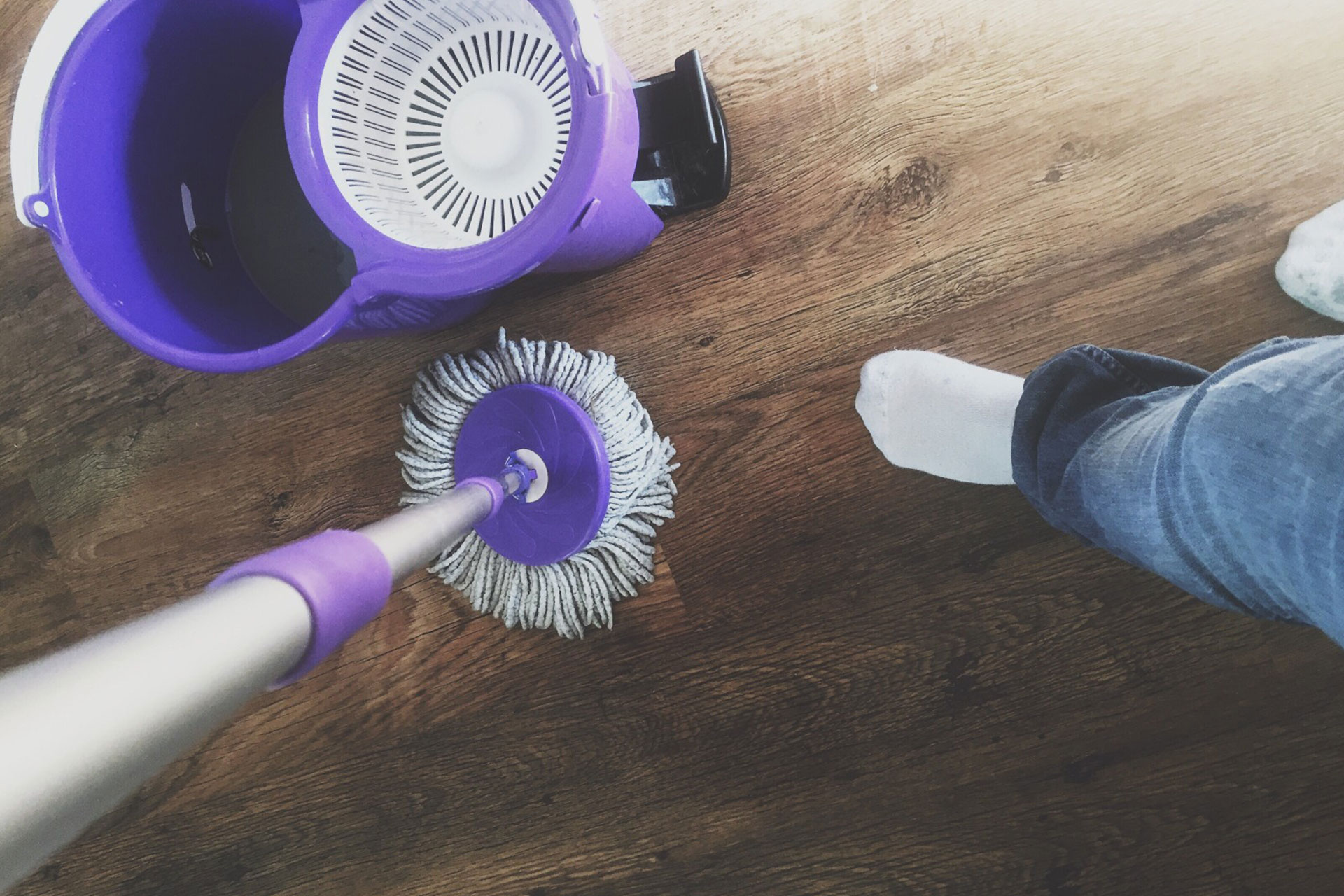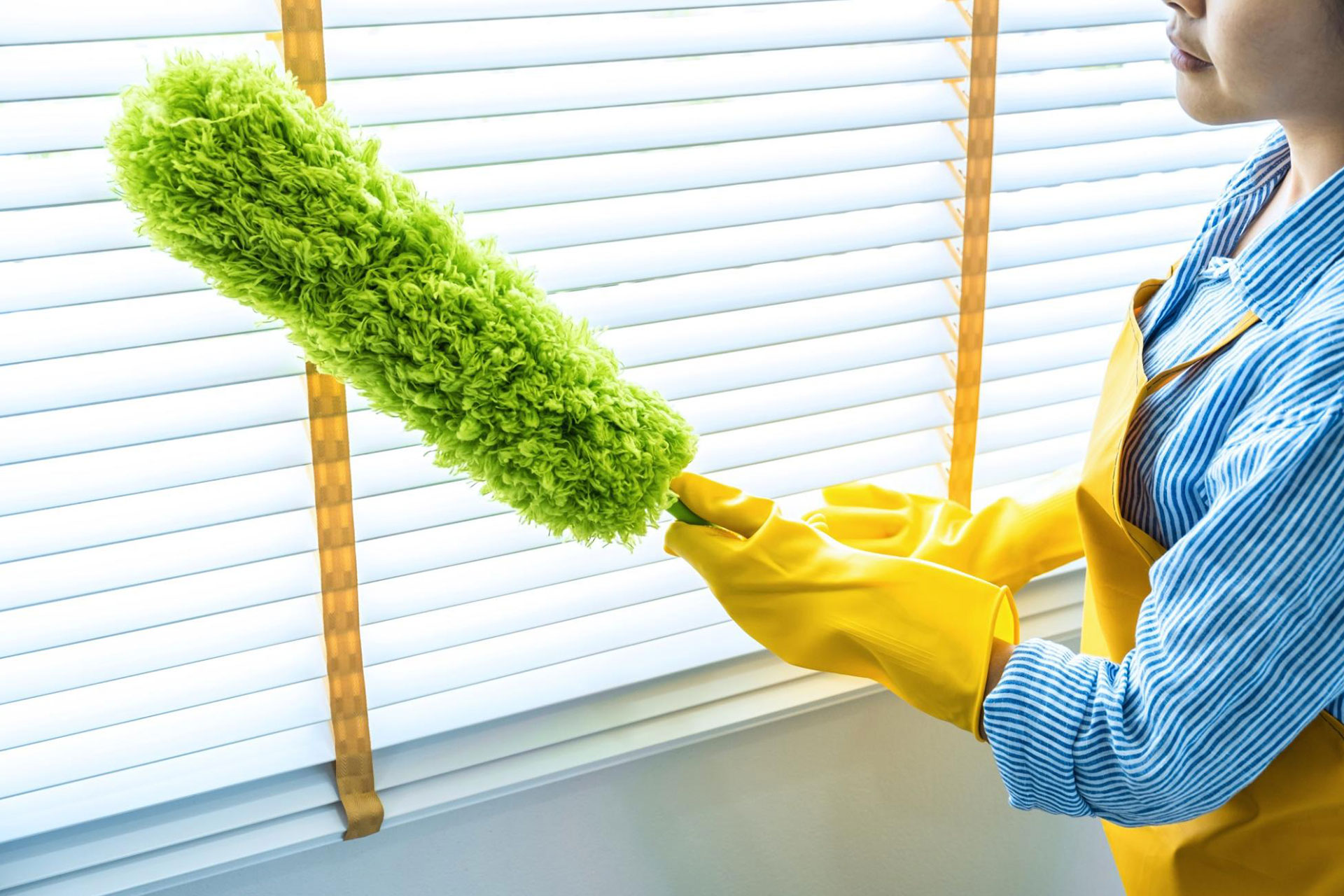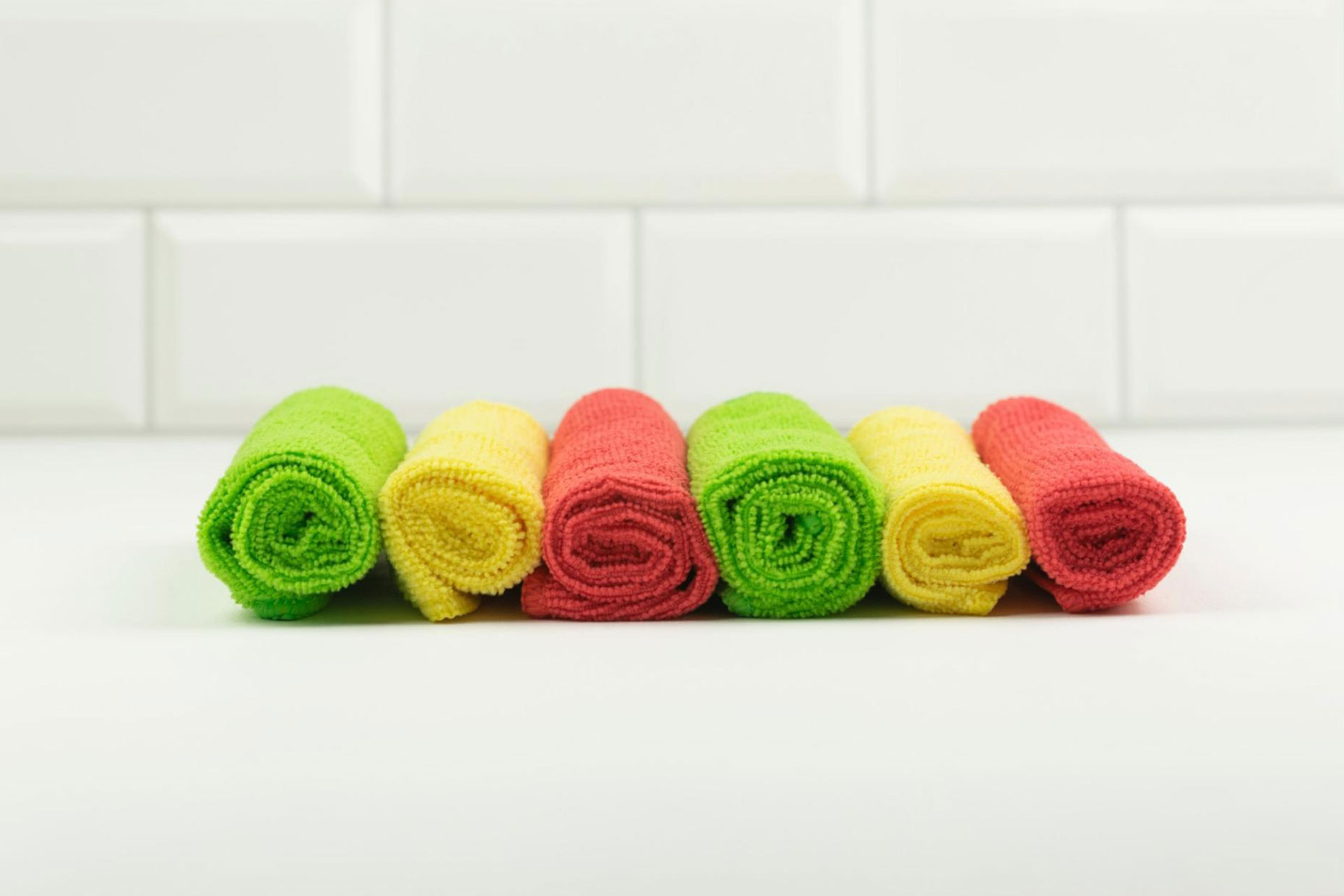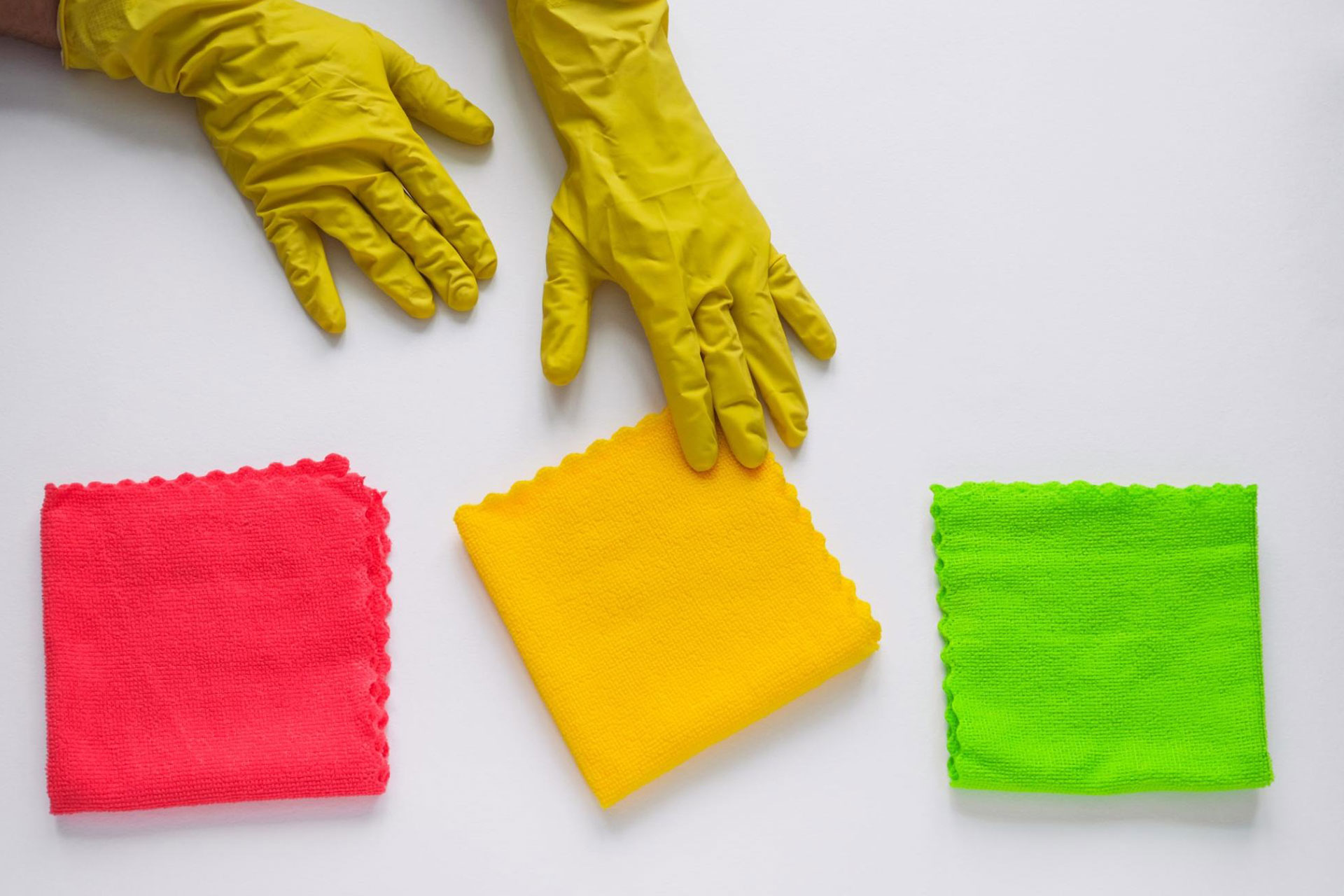The cleaning tools you have wouldn’t be called “essentials” if they were not helpful. As much as these essentials make cleaning faster and easier, they also need some proper care. What do we mean by this? The cleaning tools get exposed to different dirt substances each time you use them, making them prone to carry bacteria around your household. Neglecting to clean them properly after every use will only result in them catching foul odor, debris, dirt, and bacteria. So if you mostly skip cleaning them, then now is the time to change that.
Here are ways on how you can take care of your cleaning essentials:
1. Mop

Before washing the mop head, remove the dirt, dust, or any debris that got stuck in between the material. Don’t forget to do this part as it helps easily clean your mop head. Wash it with hot water and plain detergent, then hang it to dry.
For flat mop heads, you can remove the pads and wash them the same way you do with microfiber cloths since it is also the same material. Avoid using fabric softeners and throwing them in the dryer. See to it that you wash your mop heads monthly. The ideal time of replacement for cotton mop heads is after 15 to 30 washes. For microfiber mop heads, which last longer, you can replace them after approximately 500 washes. Thoroughly check if they already need to be replaced because it is not good to keep on using them when they have passed the ideal time of usage.
2. Brush

Remove any debris and pick out the hairs from the brushes before you wash them. Fill half of the bucket with water, then add one cup of your chosen cleaning solution or detergent. Make sure to properly dissolve the detergent into the water. Afterwards, let the brushes soak for about 30 minutes to 1 hour, depending on how dirty they are. Find a place in your laundry area or outside of your house where you can let it air dry. To maintain your brushes, you have to clean them monthly. Rinsing your brushes after every use is also advisable to remove excess dirt and prolong its usage.
3. Broom

The broom is one of the most frequently used cleaning essentials you have at home. That’s why, it also picks up a lot of dust and dirt. But the good thing is that you can easily clean it and get rid of the accumulated dust and dirt in between the bristles. You only need to take your broom outside of your house and knock it against the wall to shake off the dirt. Another thing you can do is to use a vacuum cleaner to suck all the accumulated dust and dirt from your broom. Do this every week.
For a deeper clean, soak the broom head in a bucket of water with liquid dish soap or your favorite cleaning detergent. Take note that plastic bristle brooms can be soaked in soap and water for 30 minutes to 1 hour, while natural fiber brooms can only be soaked for 15 minutes. Rinse, then let it air dry. You can do this deep cleaning for your broom once a month.
4. Vacuum

There is not one specific way to clean vacuums because they come in different models and are manufactured differently. Make sure to check the manual on how you can clean it. Although, you can still clean them using these methods:
- All vacuums have containers, canisters, or bags that hold dirt. So you need to empty the dirt container to avoid clogged dirt. This helps the vacuum suction perform better.
- Wash the filter every 3 months. Soak it in hot water with a little bit of liquid dish soap or cleaning detergent. Rinse thoroughly and let it dry for 24 hours before placing it back in the vacuum. Placing a wet filter inside the vacuum can destroy it.
- Check if there are any hair strands that got stuck on the powerhead.
- Vacuum attachments can also be cleaned using soap and water. Make sure to rinse them properly and let them dry for 24 hours, This can be done twice a year.
5. Sponge

Since sponges naturally, easily absorb liquid substances, you can’t really neglect cleaning them because there might be bacteria slowly growing in them. So with that, you have different cleaning methods to choose from for your sponges.
- Same as other cleaning essentials, you can soak your sponges in water with liquid dish soap or cleaning detergent. Rinse properly and squeeze out the water, then let it dry.
- Another method is placing your sponge in the microwave to clean it. After washing with soap and water, place the sponge inside the microwave and set the time for 2 minutes. Make sure that the sponge is really wet when you place it inside the microwave. You can place it in a bowl. Let it cool down first before getting it.
Take note: Do not place sponges with metallic parts, metallic scrub parts, or foil parts inside the microwave because this can cause fire.
6. Duster

Clean your dusters, may it be the feather, wool, or cotton type, the same way you do with your broom. Take it out and hit it against the wall to shake off or remove the dust and dirt that got stuck between the fibers of the duster. After removing the dust and dirt, you can soak it in warm water that is mixed with a few drops of liquid dish soap, then swirl the duster in. Rinse it well, hang it, then let it dry.
7. Microfiber Cloth

Microfiber cloths are made from fibers that easily attract dirt or anything that is on the surface. These soft, fluffy microfiber cloths make good cleaning tools because they are absorbent. That’s why you have to be careful in washing them because they may lose the static charges that attract or pull particles to them.
Shake off the accumulated dust and dirt, then wash the microfiber cloth with warm or hot water and mild detergent. Avoid using fabric softener because this can lessen the static charges. As much as possible, avoid washing them together with other fabrics, such as cotton because the microfiber will stick on the lint of the cotton fabric. For drying, the ideal way to do it is to air dry, but if you want to use the dryer, make sure it is set on a low heat setting.
8. Dish Cloth or Rag

Since dish cloths and rags are made from fabrics that are not as delicate as microfiber cloths, you can simply throw them in the washing machine. Of course, you have to wash them separately from any clothing. Along with the detergent, add a half cup of baking soda as this can help clean deep stains and remove odors from the dish cloth. Rags that are filled with grease stains can be washed using coke. Just a can of it will do. Add the detergent and pour the can of coke into the washing machine, then run it on heavy duty. The phosphoric acid that coke contains helps take off stubborn grease and stains.
The same approach you have in cleaning your home should also be the same when it comes to maintaining your cleaning essentials. It should go both ways. It’s simple, you can’t say that your home is completely clean if your cleaning tools aren’t clean themselves.
We hope that this article has been helpful in listing down ways to take care of your cleaning essentials.
If you are in need of professional cleaning for your home or business, contact us today and we will be glad to offer you the best of our services!
